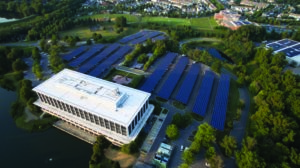With the drop in price of distributed energy systems (mainly solar PV), the cost of energy for some prosumers becomes lower than the one provided by the grid. They are then tempted to severe their tie to the network to escape its cost. The burden of the cost of this mutualized infrastructure would then have to be socialized onto fewer customers, pushing more of them to leave their electric utility to become autonomous prosumers. This is called the “utilities death spiral.”
But it misses the point. The grid brings much more than just kilowatt hours to its customers.
- First, it brings reliability, thanks to mutualized back up that could only be matched on an independent energy system with overly costly generator redundancy.
- Second, the grid can supply the inrush current some equipment needs to start, for example, motors. Relying only on local energy generation requires oversizing it for only those few seconds when the fridge or air conditioning compressor kicks in.
- Third, the sheer size of the electrical system enables the grid to provide high-quality voltage and sinusoid that modern equipment requires. In autonomous systems, harmonics that harm the lifespan of machines and electronics are difficult if not impossible to dampen.
- Fourth, the overall efficiency of the electrical system is better if generators connected to the grid can merge all their outputs, given the fungible nature of electricity, while running at their best efficiency ratio. Any local generator would have to run close to the profile of the loads connected to it, thus often operating out of its ideal efficiency range. For example, a Combined Heat and Power system (CHP) will not run at its optimum if heat and electricity are needed at the exact same time.
- Last, being connected to the grid gives the ability to engage in energy transactions. Obviously, an islanded system has neither access to energy markets nor any possibility to sell its excess power.
The grid brings so much more than kilowatt hours that it is here to stay. There certainly is an issue in the way utilities pass on the cost of the grid to its prosumers, but it’s the regulators’ mission to find ways for fair payment of the grid’s value.
Read this complete ebook focused on how utilities can face today’s challenges.




Conversation
Much better article than the previous one I did not agree with at all. I do believe a restructuring of the utility rate structures is necessary, but not just a migration to time of use rates to discourage distributed PV – that does not make sense. Utilities need to charge for, and be willing to pay from customers or IPP’s who can positively impact all of these: frequency regulation, voltage regulation, harmonics, power factor correction. Most rate structures in North America (and worldwide) do not have enough penalty in them to encourage end customers to worry about fixing these things that do have real impacts on utility grids. More widespread DG is coming and should come – the utilities cannot change that fact. They need to change their thinking from one of minimally servicing customers who are revenue streams based on KWh usage (and mostly burn fossil fuels) to one of being stewards of the grid, which provides the benefits you mention above. The entire rate structure thinking needs to be completely revamped but the utilities need to accept that the days of burn and sell are over.
Hello Rudy,
That’s exactly my point: rates should reflect the value each stakeholder brings to the overall system and level the playing field for alternatives to fossil fuels (such as demand management and renewables) to compete fairly.
Thanks for your comments and for visiting our blog,
Regards,
Xavier